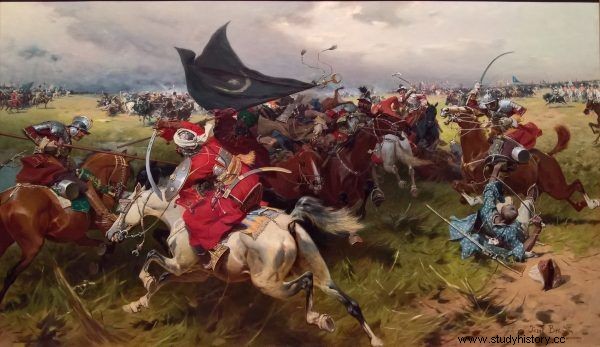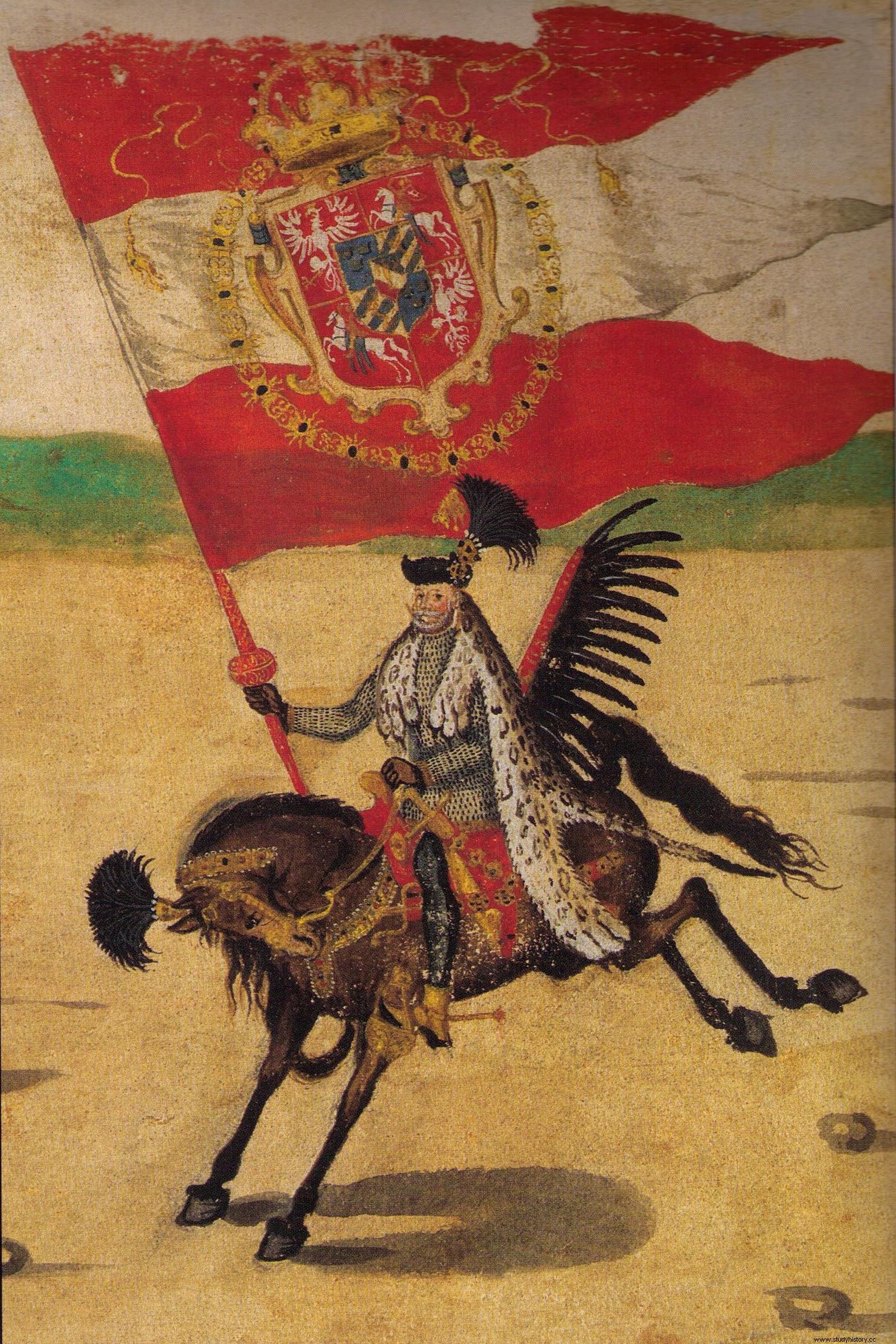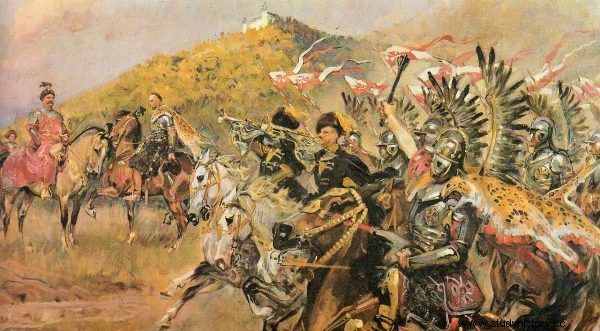Other warriors looked just miserable at the hussars - the whole of Europe would agree with this statement during the heyday of Polish cavalry. Our warriors were praised for their bravery, bravery and "nut-biting" eyesight. And they did their best not to get this image hurt.
Poles are born soldiers - such an opinion about Polish men, especially noblemen, was quite common since at least the 16th century. Where did it come from? Not only of the outstanding acts of war, which the inhabitants of the Commonwealth could pride themselves on in the 16th-17th centuries, but also of how they looked and behaved.
Strength, head and gait
The Polish soldier impressed with his appearance, and his manner was respected. One glance was enough to see that his profession was fighting. Traces of this can be found in the accounts of foreigners. For example, Charles Ogier described the infantrymen of the Ruthenian voivode Stanisław Lubomirski, whom he saw on July 28, 1635 near Toruń:
Nowhere in the world are you sure to find more robust and strong-looking people; for they are already terrifying with their very face and gait. Anyway, they all have heads marked by cruel scars by the Muscovites and Turks, and since their heads are shaved, these wounds are visible.
Let us note three features that impressed the French. They were:the strength of the soldiers, shaved heads with traces of old wounds, and the manner of movement (gait). The same elements appear in other relationships. But before I go over to them, I would like to add that the Swedish infantry, whom he saw near Malbork, made a terrible impression on the French.
Charles Ogier could barely see people in her - they were so dirty, feral, ragged and barefoot. It was a picture of real misery and despair. Even more shocking is the fact that the Swedes in front of the Scots, which he had a chance to see a bit later, were quite tolerable anyway.

Charles Ogier admired the vigor of the Polish infantry, but it was our cavalry that made an electrifying impression on him. The illustration shows the painting by Józef Brandt "The Fight for the Turkish Banner".
"I took them by their claws"
The differences became even more apparent when it came to cavalry. For example, about the Finnish cavalry, which he saw useful in combat, Ogier noted:
I looked around where the gentlemen could be, because I took those who were on the horses by the bellies, they were so poorly and poorly dressed.
He wrote about Polish, which clearly impressed him several times. Among other things, like this:
The Hussar banner left the camp opposite us; I have never seen anything more graceful than this view .
Elsewhere he wrote:
On that day, countless Poles came to Sztumska Wieś, mainly hussars, on noble horses and beautifully dressed, to spread their splendor to the Swedes.
This "splendor" was not only due to the use of brave steeds or rich equipment. It was also based on the cut that the Polish cavalrymen kept. Another Frenchman, Françoise Paulin Dalerac, noticed him as well. He was a courtier of Jan III Sobieski and his wife Maria Kazimiera. He stayed in Poland (with breaks) for several years. In 1689, he wrote down the history of the Viennese relief, in which he included an extensive description of the hussars. There is a paragraph like this in it:
The Hussars are here the first of the King's Cavalry, similar to the way they are in France's Stroze Royal People. Jakoż without convady [no doubt] , they are, the poor of the front-runners of all Europe; and this is because they have good faces, y great energy, and that good horses are richly dressed, y they wear exquisite Armatura [armor, weapons].
So not only good horses, excellent weapons, but also a "good face" and "great spirit" characterized the Polish knight.
About myself
The observations and feelings of foreigners coincided with the way Poles assessed the hussars. When Wacław Dyamentowski saw 700 Russian horse archers on July 14, 1607, he wrote:
14. 700 men came with bows on horseback to the Szujski army, Albertus comrades, such knights that 40 ironers would undoubtedly defeat them.
This remark not only proves that Dyamentowski believed in the great combat value of hussars. It also proves that the archers he watched presented themselves extremely unfavorably. "Albertus, comrades" is a contemptuous term that referred to the then hero of Polish misdemeanor literature. This Albertus can be treated as an equivalent of the well-known soldier Švejk. So there were Moscow cavalrymen Švejk compared with hussars. At least in the eyes of a Polish nobleman.

The Hussars were able to defeat even a dozen times more numerous opponent.
What did the hussars themselves think? Wespazjan Kochowski, a former hussar, and later a poet and historian, in his work published in 1674, he included the song Hussar from Stryi to the Son-in-Law sent , which is the hallmark of the perfect hussar. And again, not only is the richness of clothes, weapons, equipment and a great steed noticeable, but also, and perhaps above all, the behavior and appearance of the knight himself.
Seriousness, boldness, head and face with traces of struggle, "nut-biting" eyesight, dignified step, obligatory mustache, nonchalance ... In a word - perfection in posture, appearance, every movement and gesture; object of adoration of men (especially other soldiers) and women.
Although Kochowski in his second piece ( Replika on it from Son's son Stryi ) tries to fight this image, arguing that it is not these external signs of greatness, which are appearances, but the behavior in battle that define a good hussar (knight), it does not change the fact that just such a pattern described in the work Husarz od Stryia Sentinel who is enlisting it was in force in his day.

In the times of the Polish-Lithuanian Commonwealth, the appearance of the hussars was of great importance.
Both Ogier and Kochowski noticed the scars exhibited by Polish knights. Smash, scratch, paragraph, end - that's what we used to call them at the time. They enjoyed considerable admiration among the public. Especially soldiers:
The good soldier enjoys the scar he got on the woyna and thus praises and recommends knighthood.
Source:
The above text was originally published as part of the book by Radosław Sikora "Husaria. The pride of the Polish army ” (Horizon 2019 sign).
The title, lead, illustrations with captions, bolds and subtitles come from the editorial office. The text has undergone basic editing in order to introduce more frequent breakdown of paragraphs, expansion of abbreviations etc ..
